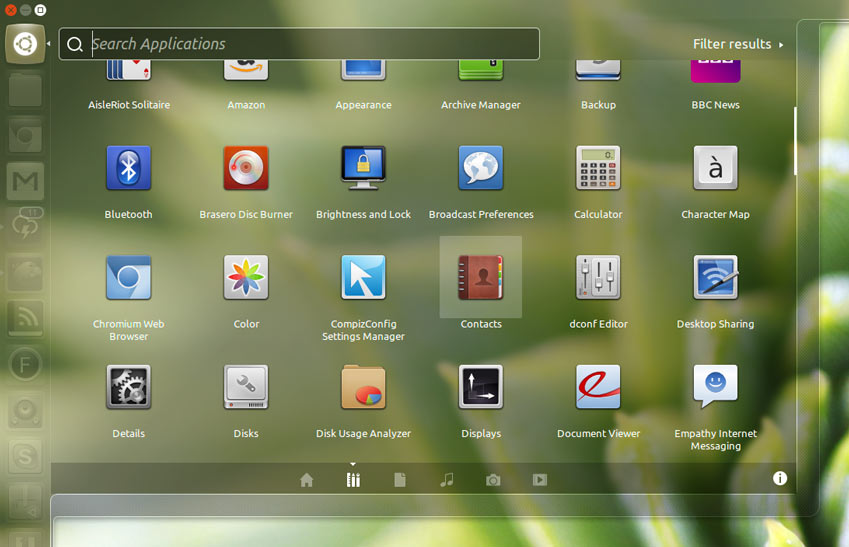Dear C-Levels,
You have assigned me with
a task of evaluating Ubuntu as an option for our business. Please allow me to
present my findings, assessment of risk, and recommendation pertaining to the
possible migration from Windows.
Ubuntu is a Linux based
operating system that is part social and part economic: free software,
available free of charge to everybody on the same terms, and funded through a
portfolio of services provided by Canonical, the development company. Upon
download of the system or any applications, potential users are solicited with
an option to voluntarily sponsor future updates by donating to the
company.
Ubuntu appears to be
targeting the corporate world with the release of
Ubuntu Business Desktop Remix as a starting point for large-scale
corporate desktop deployments. The company also offers Landscape, the
commercial Ubuntu systems management tool from Canonical that promises IT administrators’
easy management of thousands of end-user devices across your enterprise. The
first release included the Adobe Flash Plugin, vMware View, and the Open JDK 6
Java run-time environment, while removing social networking and file sharing
applications, games and development/sysadmin tools. Canonical also promises low
threat of viruses as almost all viruses are coded to
take advantage of weaknesses in Windows and would not run on Ubuntu.
I think though that it is just a matter of time before this OS will need
antivirus software.
Although the system
appears to be user friendly I am expecting some push-back from users
as well as inefficiencies caused by lack of familiarity with the system as
compared with Windows. Let’s give it a ballpark figure based on
estimated inefficiencies of 5 hours per week per week per user, considering
the size of our department (200 people) and estimated time to bring users up to
speed of one month. We are looking at a 40 hour work-week for 4
weeks with 200 employees, which translate to 32,000 hours, out of which at
least 4,000 would have to be lost due to user unfamiliarity with the system. At
an minimum cost of $25 per hour that will translate to $100,000 for the month.
If we factor in the cost of support offered by Canonical at a Standard (general
business use such as email, messaging and web browsing) or Advanced level
(intensive desktop usage such as work conducted by developers) as are looking
at an additional cost of $105 to $165 per desktop, which in our case would cost
us anywhere from $21,000 to $33,000 per month. We would then need to assess how
many months of support we would require. Currently desktop support is provided
by out IT team.
I approached the IT team
with the idea and they brought a few interesting decision points. They first
stated that out PC leases and prices already include the cost of the operating
system and based on the agreements we have it would be difficult to separate
that cost alone (I will attempt that anyway later on). They also talked about
the server requirements and possible changes, which I cannot comment on as I do
not have required expertise. Should you wish, I will investigate further.
The biggest problem they brought to my attention was our
specialized applications and possible interface problems we may face
with the use of Ubuntu. The investigation done by the IT team could take weeks
to cover all specialized applications and systems and would further add to the
inefficiencies cost referenced above.
I was informed that it
would be difficult to separate the OS cost from PC cost. I can go
over a quick comparison of a stand-alone upgrade fee of $199.99 for Windows 8
Pro. For 200 users we are looking at an upgrade fee of about $40,000 less any
applicable corporate discount we can negotiate with Microsoft. Since our IT
already provides support no further costs need to be considered. Ubuntu
operating system is free therefore the only cost we would incur would be the
monthly support of $21,000 to $33,000. Taken that under consideration together
with the lost efficiency cost I do not believe that it would be beneficial for
us to consider adopting Ubuntu as our operating system.
On a personal note, I
really enjoyed my interaction and experience with this operating
system. I think it would be well suited for a start-up business, small
tech-oriented companies, an internet cafe, educational environment such as a
computer lab, or as a temporary or permanent replacement for a crashed
operating system. I am strongly convinced that Ubuntu has a future in corporate
world and may stand to be a substantial competition for Windows and Mac OS.
Everyone was skeptical about Apple products just a few years ago and
look how far the company went now. There are few of us that do not owe some
sort of an Apple product.
I hope you will find my
recommendation helpful. Should you require any additional information or
further assistance, please do not hesitate to contact me.
Best regards,
MKO










